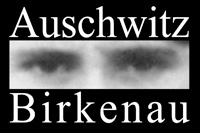




Crematoria
As in other German concentration camps, also in Auschwitz there was a crematorium for burning prisoners’ corpses. It went into operation in mid‑August 1940. The furnaces for that first crematorium and all the later ones were supplied and installed by the German company Topf und Söhne of Erfurt. Up to 340 corpses per day could be burned in the crematorium. The morgue associated with this crematorium was converted into the first gas chamber in September 1941.
When the extermination of Jews began in 1942, they were murdered in the Little Red House and Little White House and the bodies were buried in mass graves. Midway through the year, with the number of transports of murdered Jews rising significantly, it was decided to dig up the mass graves and dispose of the bodies in burning pits, and also to build four modern, efficient crematoria, functionally connected with gas chambers. They went into operation in Birkenau in 1943. The two largest ones could burn up to 1440 corpses per 24-hour day; the smaller paired up to 768 corpses
In the spring of 1944, when extermination peaked as transports of Jews from Hungary arrived in Sonderaktion “Ungarn”, the crematoria could not keep up and, once again, some bodies were burned outdoors.
The building of the first crematorium which in 1944 served as storage space and an air‑raid shelter for Germans remains intact until today.
